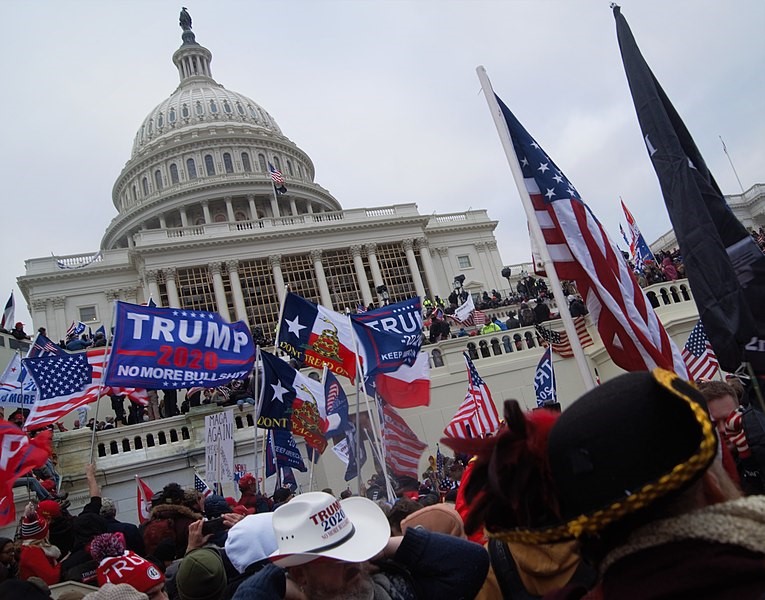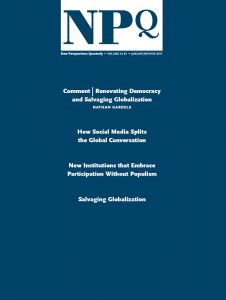The Hero Fallacy Paradox

February 2021, American President, Donald J. Trump became the first U.S. President to be impeached twice. Donald Trump was impeached a second time for inciting his followers to attack the United States Capitol in January of the same year in his attempt to overturn the 2020 presidential election to remain in power. What is now referred to as the January 6th Insurrection, represents a reactionary attempt to thwart democracy by ending the peaceful transition of power, based on a disproven conspiracy about a stolen election, which devolved into political violence.
Several thousand of then President Donald Trump’s loyal followers, clad in Trump branded clothing and carrying flags emblazoned with his name, streamed from his January 6th Stop the Steel rally to Capitol Hill. His followers, bent on preventing the final certification of the 2020 election, arrived at the Capitol with ill intent. The certification process, considered by all but the Trump campaign and his most sycophantic followers, to be a purely administrative affair, directs officials to enter the Electoral College votes into the record, nothing more. Regardless, Trump, along with a few supporters from the right-wing of the Republican Party, insisted that Vice President was empowered to reject electoral votes already certified by each state in order to keep Donald Trump in power. Tensions mounted when then Vice-President Mike Pence refused to deviate from the normal constitutional order and nullify election results.
The Trump rally itself was overflowing with incendiary and radical rhetoric that continued to claim the election was stolen from Donald Trump and that his followers should march to the Capitol and “stop the steel.” The name of the rally itself had become a rallying cry for insurrectionists who attacked their own Capitol, assaulted more than 130 police officers, and threatened to murder members of Congress, while chanting “hang Mike Pence.”
Even before this attempted insurrection had concluded, it was painfully obvious this event was going to become a seminal incident in American democratic history. This event represents the first time a sitting U.S. president has attempted a coup d’état against the United States. Though political actors, their rhetoric, and their actions are often problematic and mercurial, I became far more fascinated by the average, everyday Americans who took it upon themselves to violently attack their own Capitol to keep a man in power who legitimately, and without question, lost the preceding election.
Further investigation into their justification showed a deliberate construction of a narrative about themselves that helped to explain many of the insurrectionist’s motives. Once the federal government began to identify, charge, and prosecute hundreds of the insurrectionists, the U.S. Attorney’s Office of the District of Columbia provided the public access to much of the court records of the insurrectionists. Many of us who watched the events of January 6th unfold on national news, all witnessed a strange, and all be it a disturbing phenomenon. Americans, in the middle of committing acts of political violence against their own government, were boasting with pride about their actions on social media and via text messages to friends and family. This is where I began my investigation into the insurrectionist’s motivations.
The insurrection and attempted coup d’état did not materialize overnight. Then President Donald Trump laid the groundwork for his stolen election claim long before the election even began. Trump began claiming the 2020 election was going to be rigged against him by the Democratic Party and the “deep state” during the preceding midterm election in 2018. This claim I called the “meta narrative.” The claim of a stolen election establishes the bases for all other actions following the 2020 election from both Donald Trump and his followers. This unfounded conspiracy theory was debunked by all fifty U.S. state elections office, more than 60 claims of voter fraud were rejected by the courts for lack of evidence, and Trump’s own Attorney General found the fraud claims without merit. Regardless, this meta narrative served as the keystone to Donald Trump’s Stop the Steel rally in D.C. on that fateful day.
From this meta narrative, and the request from Trump to his loyal supporters to march to the Capitol to “stop the steel,” his supporters felt enlisted in a conflict to right a wrong and fight evil by stopping the certification of the 2020 election and to keep their dear leader in power. This case represents a clear example of the psychological theory of cognitive dissonance. Leon Festinger expounded on this theory in 1957 to describe and explain the psychological phenomenon of people’s need to maintain their world view and resist attempts to alter it with contradictory information. This contradiction and resistance, Festinger described as “cognitive dissonance.” People actively avoid the discomfort involved with cognitive dissonance, even to the point they may view the dissonance as an existential threat to their identity. Working from this base theory I began to explore the linguistic data in the insurrectionist’s court records. In many cases, the individuals had posted on social media, texted friends and/or family, or made direct statement to arresting authorities regarding how they perceived themselves leading into this attack. What I discovered was that many of these people, most with no history of violence or radical affiliations, viewed themselves as a hero fighting for the soul of the republic. Many of these heroic narratives attached ideas like paralleling this event with the 1776 American Revolution, labeled themselves patriots, or Democrats as traitors, and stated they were “taking back” their country.
Objectively, and within the construct of a narrative, anyone who engages in violence based on an unfounded conspiracy is arguably a villain. At the very least, a pawn in a dangerous game of political theatre. However, in so many examples from the U.S. Attorney’s case files, these insurrectionists proudly viewed themselves as a hero. This expressed narrative identity presents a paradoxical view of the world, where villainous actions are assumed to be heroic. What emerges is a new narrative theory, the hero fallacy paradox.
Christopher Vogler, author of The Writer’s Journey: Mythic Structures for Writers proposed an interesting recommendation for fiction writers. In the mind of the villain, they are the hero. Though Vogler clearly intended his idea to provide for better fiction writing, the concept aptly explains how the insurrectionists viewed themselves and their actions. The insurrectionists, with their violent ideation and hero mindset, created a heady mix of destruction and violence to correct their cognitive dissonance. This qualitative study, which I believe effectively describes and explains many of the January 6th attackers’ motivations and justifications, lends itself a measure of predictability regarding an aspect of political violence. Individuals expressing the combination of a heroic mindset and violent ideation associated with political matters may be easily pushed into violent action prescribed by an influential figure, as if they are protagonists in a story about an underdog overcoming a sinister conspiracy. Sprinkled throughout the insurrectionist’s court records are assertions their actions were taken either in support of, or as a direct order from, then President Donald Trump. Trump was the catalyst that ignited the fire of these self-radicalized wannabe heroes. “Heroes” history will forever view as villains. One person’s insurrectionist is another person’s patriot.
Dr. Paul J. Pope is an Associate Professor of Political Science at Montana State University Billings. This blog article is based on his published article titled, “The Hero Fallacy Paradox: Cognitive Dissonance and the Rationalization of Political Violence.” The article was published in the academic journal, Sociology Compass.




